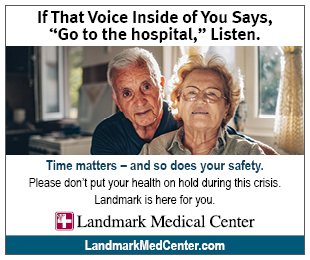
New law to require AEDs at all health care facilities
STATE HOUSE – A new law sponsored by Rep. Arthur Corvese and Sen. Louis P. DiPalma will soon require that all health care facilities in Rhode Island have a functioning automated external defibrillator and a person trained in its use.
Automated external defibrillators (AED) analyze a person’s heartbeat and, if necessary, deliver an electrical shock to the heart to re-establish an effective rhythm. Since 2017, Rhode Island law has required public places with a capacity of 300 or more people to keep one on site, and to have at least one person trained to use it.
The legislation (2024-H 7044A), 2024-S 3124), which was approved by the General Assembly June 13 and signed by Gov. Daniel McKee last week, will ensure that health care facilities, regardless of capacity, are subject to the same requirement. The requirement takes effect Sept. 1 and includes hospitals, nursing facilities, ambulatory surgery centers, treatment centers, school and neighborhood health centers and the like, as well as physicians’, dentists’ and other health care providers’ offices.
“AEDs absolutely save lives. Cardiac arrest can happen anywhere, but health care facilities in particular should be equipped for that situation. The more AEDs that are available in places where people are, the more likely it is that people will survive cardiac arrest,” said Representative Corvese (D-Dist. 55, North Providence), who introduced the bill after a friend experienced a near-fatal reaction to a lidocaine injection at a health care facility. While fortunately, his friend did survive, the person went into cardiac arrest while being transported by ambulance to a hospital. That situation likely would have been fatal had the ambulance not arrived sooner, since the facility where the treatment occurred was not equipped with an AED.
Said Representative DiPalma (D-Dist. 12, Middletown, Newport, Little Compton, Tiverton), “AEDs are easy to use and should be standard in any health care facility. Seconds matter when a person goes into cardiac arrest, and their chances of survival are vastly improved if there is an AED available.”











